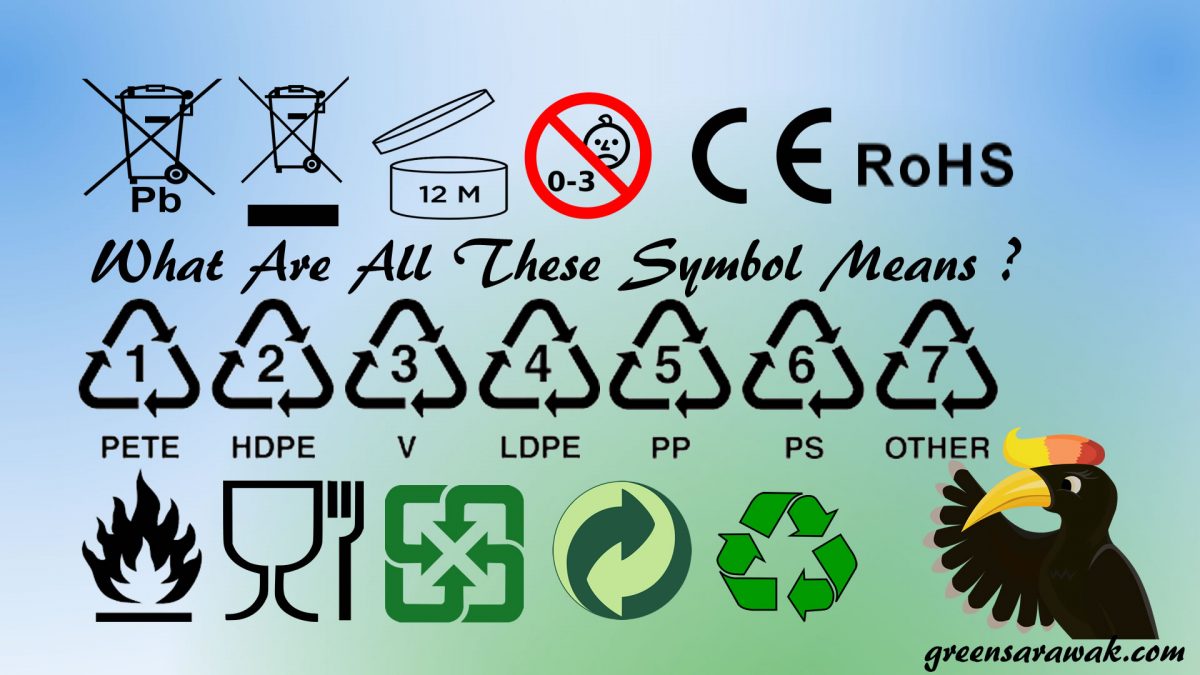It is very common to find symbols on product packages, which to the naked eyes an art, but it does convey important messages on how to handle it properly and how to dispose them correctly. Improper disposal may cause harm to the environment as we know it.
Lets learn to recognize them and act according to the specification. Your next correct move may means save the environment or the people you love.
Not Suitable for Children under age 0-3 symbol
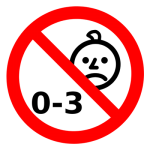
The Not Suitable for Children under age 0-3 symbol denotes a chocking or suffocation hazard of the product.
75 percent of choking deaths occur in children under the age of 3 years. This is partly because they tend to explore their world by putting things in their mouth.
This symbol usually appears on products with loose or small parts, including small lithium cell batteries (button batteries), beads, marbles, balloons, small magnets (often found on refrigerators or in magnetic toys), small toys, and even clear plastic bags (suffocation hazard).
period-after-opening symbol (PAO)

The period-after-opening symbol identifies the useful lifetime of a cosmetic product after its package has been opened for the first time.
The time period is most often represented compactly as a number of months, followed by the letter “M”. It can range from 3M, 6M, 9M, 12M, 18M, 24M to 36M.
Flammable Hazard Symbol
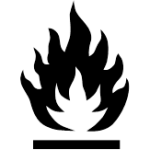
As part of the Hazardous Waste, the Flammable symbol identify flammable or Ignitable wastes. Ignitable wastes can create fires under certain conditions, are spontaneously combustible, or have a flash point less than 60 °C (140 °F).
These waste should handle with care and should not expose to heat source or burn. Such symbol are commonly found on aerosol products and fuel products.
Food Safe Symbol

The international symbol for “food safe” material is a wine glass and a fork symbol.
It is important to know that all the material that is in contact with the food (includes food and water containers, packaging materials, cutlery etc) are safe to use with food.
Food contact materials can be constructed from a variety of materials like plastics, rubber, paper, coatings, metal etc.
During the contact of the food contact materials with the food, substances can migrate from the material to the food, which including loose materials and toxic contaminants.
Tidy Man Symbol
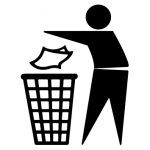
This tidy man symbol is from Keep Britain Tidy campaign asks you not to litter. It doesn’t relate to recycling but is a reminder to be a good citizen, disposing of the item in the most appropriate manner.
This symbol can be found in lunchbox and containers from fast food franchise.
There are many variant to the “do not litter” symbol, but all bring the same meaning. Lets not only keep Britain Tidy but keep the World Tidy.
Restriction of Hazardous Substances (RoHS)
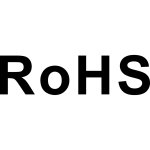
RoHS is a directive on the restriction of the use of certain hazardous substances in electrical and electronic equipment. RoHS motivated in part to address the global issue of consumer electronics waste.
RoHS is often referred to as the “lead-free directive”, but it restricts the use of the following ten substances:
- Lead (Pb)
- Mercury (Hg)
- Cadmium (Cd)
- Hexavalent chromium (Cr6+)
- Polybrominated biphenyls (PBB)
- Polybrominated diphenyl ether (PBDE)
- Bis(2-ethylhexyl) phthalate (DEHP)
- Butyl benzyl phthalate (BBP)
- Dibutyl phthalate (DBP)
- Diisobutyl phthalate (DIBP)
Waste Electrical and Electronic Equipment (WEEE)

The Waste Electrical and Electronic Equipment Directive (WEEE Directive) is the European Community Directive 2012/19/EU on waste electrical and electronic equipment (WEEE). The WEEE Directive set collection, recycling and recovery targets for all types of electrical goods. It is part of a legislative initiative to solve the problem of huge amounts of toxic electronic waste.
Hazardous electronic comprise of Lead-acid batteries, Cathode ray tubes, Fluorescent tubes, backlights to laptop screens, thin-film transistors, polychlorinated biphenyl (PCB) circuit boards, Fridges and freezers. Do not throw them in general waste bin or landfills as the hazardous material can have long term damage to the environment and human health.
Hazardous materials – Lead (Pb)

Lead is one of the Hazardous Material that is not suitable to be dispose directly to general waste bin or landfills.
Lead is a heavy metal that is denser than most common materials. It have low melting point, ductility and relative inertness to oxidation. It is extensive use in construction, plumbing, lead-acid batteries, bullets and shot, weights, solders, pewters, fusible alloys, white paints, leaded gasoline, electrical and electronic equipment and radiation shielding.
However Lead is a neurotoxin that accumulates in soft tissues and bones, damages the nervous system (causes permanent brain damage), interfering with the proper functioning of enzyme, and causes blood disorders.
Lead can disperse in air, soil and water if improperly handled, hence such waste need to be properly recollected and recycle. Lead can accumulate in soils, and remains for hundreds to thousands of years, affecting plants and other organism.
CE marking

“CE” originated in 1985 as an abbreviation of Conformité Européenne, meaning European Conformity. CE marking is a certification mark that indicates conformity with health, safety, and environmental protection standards for products sold within the European Economic Area (EEA).
♲ Recycling Symbol
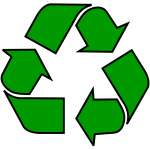
The recycling symbol comes in few variant, but nevertheless the famous international recycling symbol had been well recognized worldwide.
This symbol was designed by Gary Anderson. He was 23 years old when he entered a design competition held in conjunction of the first Earth Day on 1970 by the Container Corporation of America which asked contestants to create a symbol for recycled paper.
The three arrows can be explained by “Reduce, Reuse, Recycle” , it forms a Möbius loop.


The Taiwan’s recycling symbol features four external arrows which also create a negative space within to form another four arrows pointing outwards.
The Green Dot represent the European network of industry-funded systems for recycling the packaging materials of consumer goods. The basic idea of the Green Dot is that consumers who see the logo know that the manufacturer of the product contributes to the cost of recovery and recycling.
♳ Plastic Recycling Symbol #1 : PETE or PET (Polyethylene Terephthalate)

Plastic Number 1 indicates it is made of Polyethylene Terephthalate.
Properties: crystal clear and optically smooth, resists water, oxygen and CO2, resists high impacts, resists most solvents, can be filled with hot liquids, long shelf life, Lightweight (10% of the weight of an identical glass container), Sinks in water.
Applications: Soft Drink Bottles, water bottles, salad dressing containers, mouthwash bottles, peanut butter containers, Sports Bottles, Condiment/Food Jars, Food Trays.
Risk: low risk of leaching breakdown products. Some consider it safe, but this plastic is known to allow bacteria to accumulate.
Recycle: Readily acceptable by most curbside recycling program. High demands by re-manufacturers. Recycle into New Containers, Strapping, Tote Bags, Carpet Fibres, Clothing, Cushion/Jacket Filling.
♴ Plastic Recycling Symbol #2 : HDPE (High Density Polyethylene)

Plastic Number 2 indicates it is made of High Density Polyethylene. HDPE is defined by a density of greater or equal to 0.941 g/cm3.
Properties: Resists most solvents, high strength characteristics, stiff material.
Applications: Water Bottles, Milk and Juice Bottles, Cleaning Products, Personal Cosmetics, Some trash and Shopping Bags.
Risk: Considered to be safe. HDPE carries low risk of leaching and is readily recyclable into many goods.
Recycle: Commonly accepted by most curbside recycling programs. Recycle into New Containers, Piping, Edging, Bins, pens, benches, fencing, and detergent bottles.
♵ Plastic Recycling Symbol #3 : PVC (Poly Vinyl Chloride )

Plastic Number 3 indicates it is made of Poly Vinyl Chloride.
Properties: High impact and strength, resists grease and chemicals, tough and weathers well.
Application: Piping, Wire jacketing, Detergent and shampoo bottles, Packaging/Wraps, Chemical Dispensers, Flexible Packaging/Bags, Windows.
Risk: PVC contains chlorine, so its manufacture can release highly dangerous dioxins. Heating or burning them can also release toxin. Don’t reheat food in PVC containers as it can release toxins into your food.
Recycle: Piping, Kayaks, Carpet Backing, Packaging, Exterior Containers/Bins, Traffic Cones, Post Boxes.
♶ Plastic Recycling Symbol #4: LDPE (Low Density Polyethylene)

Plastic Number 4 indicates it is made of Low Density Polyethylene. LDPE (Low Density Polyethylene) is defined by a density range of 0.910 – 0.940 g/cm3. LDPE is created by free radical polymerization.
Properties: Tough and Flexible, Resists acid and oils.
Applications: Most of the soft bottles, Stretch Film (such as Cling Film and Glad Wrap), shrink Wrap, bubble wrap, zip-lock bags, grocery bags.
Risk: Considered to be safe. However many can’t differentiate their cling/glad wrap is made of PVC or LDPE, hence don’t heat up your food with wrap on as PVC wrap can leach harmful toxin into your food when heated.
Recycle: It can be recycle into Rubbish Bin Liners, Floor Tiles, Compost Bins, Outdoor Furniture.
♷ Plastic Recycling Symbol #5: PP (Polypropylene)

Plastic Number 5 indicates it is made of thermoplastic polymer – Polypropylene.
Properties: properties between that of LDPE and HDPE, Semi-Rigid, Great optical clarity, low moisture vapour penetration, good heat resistance , High melting point, good chemical resistance towards acids, alkalies and most solvents. This type of plastic can be put into microwaves.
Applications: Hard Containers, Lunch box, Microwave containers, Medicine Bottles, Takeaway Containers, Bottle Caps, Refrigerated Food Containers, Plastic Cutlery
Risk: No known health risk.
Recycle: gradually becoming more accepted by recyclers. It can be recycle through some curbside programs. It can be recycle into Automotive Products, Household Tools/Utensils, Outdoor Tools, Trays.
♸ Plastic Recycling Symbol #6: PS (Polystyrene)

Plastic Number 6 indicates it is made of Polystyrene. Polystyrene can be made into rigid (PS) or foam products (EPS – like Styrofoam).
Properties: Moisture Barrier, Light and Stiff, Insulation, Low thermal conductivity, Can have high optical clarity.
Applications: Styrofoam Cups, Plastic Plates/Cutlery, Food Containers (e.g. sushi packs), Meat Trays, Protective Foam Packaging, CD Cases, Small Hard-wearing Bottles, Cable Spools, Toys.
Risk: polystyrene can leach potentially toxic chemicals into food, especially when heated. It is being known to be difficult to recycle. Disposing in landfills can poses serious concern as degradation can leach toxin into environment.
Recycle: It is recycled into egg cartons, vents, foam packing, and insulation.
♹ Plastic Recycling Symbol #7: O (Others, Miscellaneous)

Plastic Number 7 indicates it is made of Other type of plastic material that is non otherwise specified. Since the 6 resin type (HDPE, LDPE, PET, PVC, PS or PP) is established in 1988, other newer composite had emerged in the market such as Acrylonitride Butadiene Styrene (ABS) and Santoprene (SAN)
Properties: Depends on resins involve in the manufacturing, some are biodegradeable, photo sensitive and plant base plastics.
Application : Common listing of all types of plastics in this category is nearly impossible since their applications and characteristics are so diverse. Commonly found in Milk/Fruit Juice Cartons, Oven Bags, Roofing, Cases, Car parts, Electronic Appliances, Water cooling bottles and many more.
Risk : Polycarbonate plastic such as found in toys and bottle can leach potential hormone disruptors (such as BPA-Bisphenol A).
♾ Permanent Paper Sign (Acid Free Paper)

Properties: Acid-free paper is paper that yields neutral or basic PH (PH 7 or greater) when infused in water. It is useful for preserving documents and artwork for longer period of time. Acid in paper can cause paper to breakdown overtime. Alkaline paper can last for >100 years (500 years for average grade and 1000 years for best grade)
Material: Any cellulose fibre as long as the active acid pulp is eliminated during process. It is lignin free and sulfur free. Lignin causing paper to turns yellow over time. A mild base is added in the paper manufacturing process to neutralize the natural occurring acid in wood pulp.

